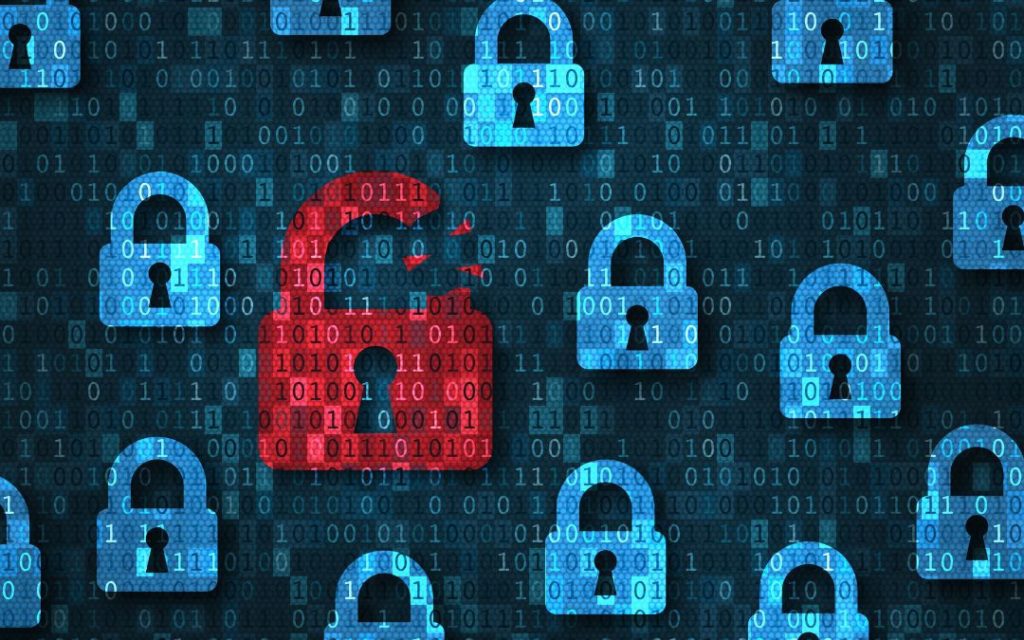
IT issues that ISO27001 helps you to resolve:
ISO 27001 is an international standard for information security management systems. Having worked in the field of IT for numerous years, I can confidently say that implementing the ISO 27001 standard addresses several critical issues in IT environments. It provides a robust framework for an Information Security Management System (ISMS) that helps resolve some of the most pressing security and operational challenges, such as:
1. Enhancing Data Security:
One of the most pressing issues in any IT organization is the security of its data. An ISO 27001-certified ISMS provides a comprehensive approach to ensure the confidentiality, integrity, and availability of your information.
2. Compliance with Legal and Regulatory Requirements:
ISO 27001 helps organizations align with numerous legal, contractual, and regulatory requirements related to information security. By following the risk-based approach advocated by ISO 27001, the software development firm I previously worked for was able to prove compliance with laws like the General Data Protection Regulation (GDPR).
3. Managing and Mitigating IT Risks:
ISO 27001 provides a systematic approach for identifying, analyzing, and managing information security risks. With the help of this standard, we were able to take a more proactive stance on risk management. For instance, a persistent issue customers face is the vulnerability of their systems to malware attacks. The risk assessment procedure laid out by ISO 27001 allowed us to identify potential risks in our customer’s IT infrastructure and mitigate them effectively.
4. Improving IT Operations and Efficiency:
Implementing ISO 27001 not only boosts your security posture but also improves your overall IT operations. It ensures that the right processes and controls are in place, leading to enhanced operational efficiency. Many customers found that incident response times improved significantly after adopting ISO 27001, thanks to a well-defined incident management process.
5. Building Trust with Stakeholders:
ISO 27001 certification is globally recognized and trusted. When customers become ISO 27001 certified, it significantly boosted the confidence of clients and stakeholders. Customers appreciated that the company had a globally recognized certification demonstrating its commitment to maintaining the highest standards of data security.
What are the implications if you don’t deal with these issues
There are certain issues which ISO 27001 addresses, it is a system or a framework that helps take control over many processes. It is not always easy to answer the question of what will happen if I don’t do something.
For example: What will happen if I don’t get insurance? Sometimes nothing will happen if luck is on our side, but there are other situations where bad things do happen and we are here trying to better understand what can happen and how to protect against it.
So what are the implications?
1. Increased risk of data breaches and other security incidents:
Failure to implement adequate information security controls can increase the likelihood of data breaches and other incidents, which can result in financial losses, reputational damage, and legal and regulatory penalties.

2. Non-compliance with legal and regulatory requirements:
Organizations that fail to address information security risks may not meet legal and regulatory requirements related to data protection and privacy, which can result in fines and other penalties.
3. Loss of customer confidence:
Customers may lose confidence in organizations that fail to adequately protect their personal and sensitive information, which can result in lost business and reputational damage.
4. Lack of competitive advantage:
Organizations that do not implement robust information security measures may not be able to compete effectively with competitors that do. This can result in lost market share and reduced revenue.
5. Limited business continuity:
Failure to implement business continuity management processes can result in disruptions to critical business operations, which can impact revenue, customer confidence, and overall business success.
Key tasks if you are to do 27001
1. Scoping:
Before we start protecting our information, we need to decide what information we want to protect. That’s why we need to think about all the things that we use or people who work with us, and all the ways we use them to store or share information. This helps us to know where our important information is and how we can keep it safe. We call this group of things and people “information security management systems.” It’s like building a fence around your backyard to keep your toys and things you love from getting lost or taken away.
Let’s say you have a small business that sells products online. Your information security management system would include all the things that you use to store and share information about your business and customers. This might include:
- Assets: Your website, computers, servers, and other devices that you use to run your business.
- People: You, your employees, and anyone else who works with you and has access to your business information.
- Processes: The ways you store and share information, such as how you collect customer data and process orders.
- Technology: Any software or tools you use to manage your business, such as a customer relationship management (CRM) system or payment processing software.
By thinking about all these things and how they relate to your information security, you can determine the boundaries of your ISMS and start implementing controls to protect your important information.
2. Risk assessment:
We need to think about ways to protect our information. We do this by thinking about all the things that could hurt our information and how badly it could hurt it. Some things are outside of our control, but some things are inside our control, like if we forget to lock the door.
Let’s say you have a computer that you use for your work.
Some risks to the information on your computer might include:
- External threats: Cyberattacks from hackers who want to steal your personal or confidential information, such as your passwords, bank account details, or private photos.
- Internal threats: Accidentally deleting files or virus infections caused by opening suspicious emails or downloading suspicious software.
- Vulnerabilities: Weaknesses in your computer’s software or hardware that could be exploited by a cyberattacker to gain unauthorized access.
- Potential impacts: The consequences of losing or exposing your important information, such as identity theft, financial loss, or damage to your reputation.
By identifying and assessing these risks, you can take steps to protect your information.
3. Risk treatment:
Now we need to think of a plan to protect it. We call this a “risk treatment plan.” We need to decide how to make sure our information stays safe. We can do this by choosing things that will help us prevent bad things from happening or reduce the damage if something bad does happen. We call these “controls.” A risk management process can be crated for this purpose.
Let’s say you have a computer that you use for your work or school. Some risk treatment controls you could put in place to protect your information might include:
- Installing antivirus software: This helps prevent viruses and malware from infecting your computer and stealing your information.
- Using strong passwords: This makes it harder for someone to guess your password and access your information.
- Encrypting sensitive files: This makes it harder for someone to read your information even if they gain unauthorized access to it.
- Backing up your files: This ensures that if something happens to your computer, you still have a copy of your data.
- Limiting access to your computer: This helps prevent others from accessing your information.
By selecting and implementing appropriate controls to mitigate or eliminate risks, you can reduce the likelihood that your information will be compromised.
4. Documentation:
Documentation is an essential part of any Information Security Management System because it helps to ensure that everyone involved in implementing and managing the system knows what to do when to do it, and how to do it. This is important because it reduces the risk of mistakes or misunderstandings that can lead to security breaches or other problems.
5. Training and awareness:
When it comes to keeping information safe, it’s not just about having the right policies and procedures in place. It’s also important to make sure that everyone who has access to that information knows how to keep it safe and understands their responsibilities.
To make sure that everyone is aware of their responsibilities, you need to provide training and awareness programs. This means teaching them what they need to know to keep their information safe. It’s like when you start a new job, they give you training on how to do your job properly.

Training might include educating personnel about different types of security threats such as phishing attacks, malware, or physical theft. It could also involve teaching them how to use security software or tools, such as encryption software or password managers.
Awareness programs, on the other hand, might involve sending out regular reminders or newsletters that emphasize the importance of information security and reinforce the policies and procedures in place.
6. Monitoring and review:
Monitoring and review are crucial parts of keeping your Information Security Management System (ISMS) effective. It’s like checking in on yourself every now and then to see if you are doing what you are supposed to be doing.
To monitor and review your ISMS, you need to regularly assess the performance of the controls you have put in place. This means checking that they are working as intended and actually keeping your information secure. You might do this by running security audits, performing vulnerability scans, or reviewing access logs.
Once you have identified any gaps or non-conformities in your ISMS, you need to take corrective action to fix them. This means making changes to your policies, procedures, or controls to ensure that they are effective in keeping your information assets safe.
7. Internal audit:
Internal audits are like self-evaluations that you do to check if you are following the rules. When it comes to ISO 27001, which is a standard for information security, it’s important to conduct regular internal audits to see if you are following the requirements of this standard.
By doing these audits, you can identify areas where you may not be meeting the requirements and find opportunities to improve your information security practices. It’s like checking your own work or studying for an exam so you can identify what you need to improve on.
8. Management review:
Management review is an essential part of keeping your Information Security Management System (ISMS) effective. It’s like stepping back and looking at the bigger picture to see if your ISMS is still aligned with your organization’s goals and objectives.
To conduct a management review, you need to regularly assess the performance of your ISMS and evaluate how well it is working to meet your organization’s needs. This might involve reviewing data from internal audits, risk assessments, or feedback from employees or customers.
During the review, you should consider whether there are any emerging threats or risks that could impact your information security and adjust your policies and procedures accordingly. You should also ensure that your ISMS is aligned with your organization’s overall strategy and objectives.
If you identify any areas where your ISMS is not performing as well as it should be, you need to take corrective action to fix them. This might involve making changes to your policies, updating your controls, or providing additional training to your employees.
9. Certification:
To show that your organization is committed to information security, you can get certified to meet ISO 27001 standards. To do this, you need to engage an independent auditor to evaluate your system and determine whether it meets the requirements of this standard. If you meet the requirements, you will receive a certificate of compliance that demonstrates that your organization prioritizes information security.
Limitations of periodic compliance
While Microsoft Excel can be a useful tool for tracking compliance status, it is not a perfect solution. Periodic compliance checks only occur at specific intervals, which may leave gaps between checks where vulnerabilities can be exploited. Moreover, regulations and standards may not cover all security risks that an organization may face, leading to a false sense of security. For example, complying with the Payment Card Industry Data Security Standards (PCI DSS) may not prevent fraudulent transactions since attackers could use social engineering tactics to obtain cardholder data.
Instead of relying solely on periodic compliance checks or tools like Excel, organizations need to adopt a more comprehensive approach to information security management. This includes ongoing risk assessments, regular security reviews, and continuous improvement to address new threats and vulnerabilities. By staying informed and implementing appropriate security measures, organizations can better protect their sensitive data and reduce the risk of a security breach.
Benefits of continuous compliance
1. Ongoing Risk Management:
Continuous compliance enables organizations to identify and mitigate risks as soon as they arise, minimizing the potential impact of cyber threats. This approach enables businesses to address risks proactively and stay ahead of emerging threats, rather than reacting to incidents after they occur. By continuously monitoring and improving security measures, organizations can reduce their overall risk profile.
2. Improved Security Posture:
A continuous compliance approach allows organizations to maintain an always-updated security posture. By identifying weaknesses in information security controls regularly, organizations can ensure that their defences remain strong and effective. This reduces the likelihood of successful attacks and protects sensitive data from unauthorized access or disclosure.
3. Competitive Advantage:
Implementing a continuous compliance approach can help organizations gain a competitive advantage by demonstrating that they take information security seriously. Customers are more likely to trust and do business with companies that follow best practices and prioritize their security. Furthermore, some industries require adherence to specific regulations, and continuous compliance helps meet those standards.
If you’re interested in learning more about the benefits of continuous compliance and how it can help your business stay ahead of emerging cyber threats, please don’t hesitate to reach out to me. Whether you need advice on implementing an ISO 27001 certification or have questions about best practices for information security management, I’m here to help. Contact me today to get started.

FAQ:
What is the difference between ISO/IEC 27001 and ISO 27001?
ISO/IEC 27001 and ISO 27001 refer to the identical standard for information security management systems (ISMS). The choice of terminology may vary depending on regional preferences or individual usage, but the standard’s content and requirements remain the same.
Who is the accredited certification body in the UK?
The United Kingdom Accreditation Service (UKAS) is the accreditation body that oversees the certification of organisations to ISO 27001 in the UK. A list of accredited certification bodies can be found on their website at: https://www.ukas.com/what-we-do/accreditation/information-security/.
What is Information security risk management?
It is a vital component of the ISO 27001 certification process. It requires organizations to identify, assess, treat and monitor risks that could potentially compromise sensitive company data or intellectual property.
What are ISO management system standards?
ISO management system standards are a set of international standards designed to help organizations implement and maintain effective quality assurance, environmental management, food safety, information security and other systems. ISO 27001 is an example of one such standard.
Sign up below to join the Operum newsletter



